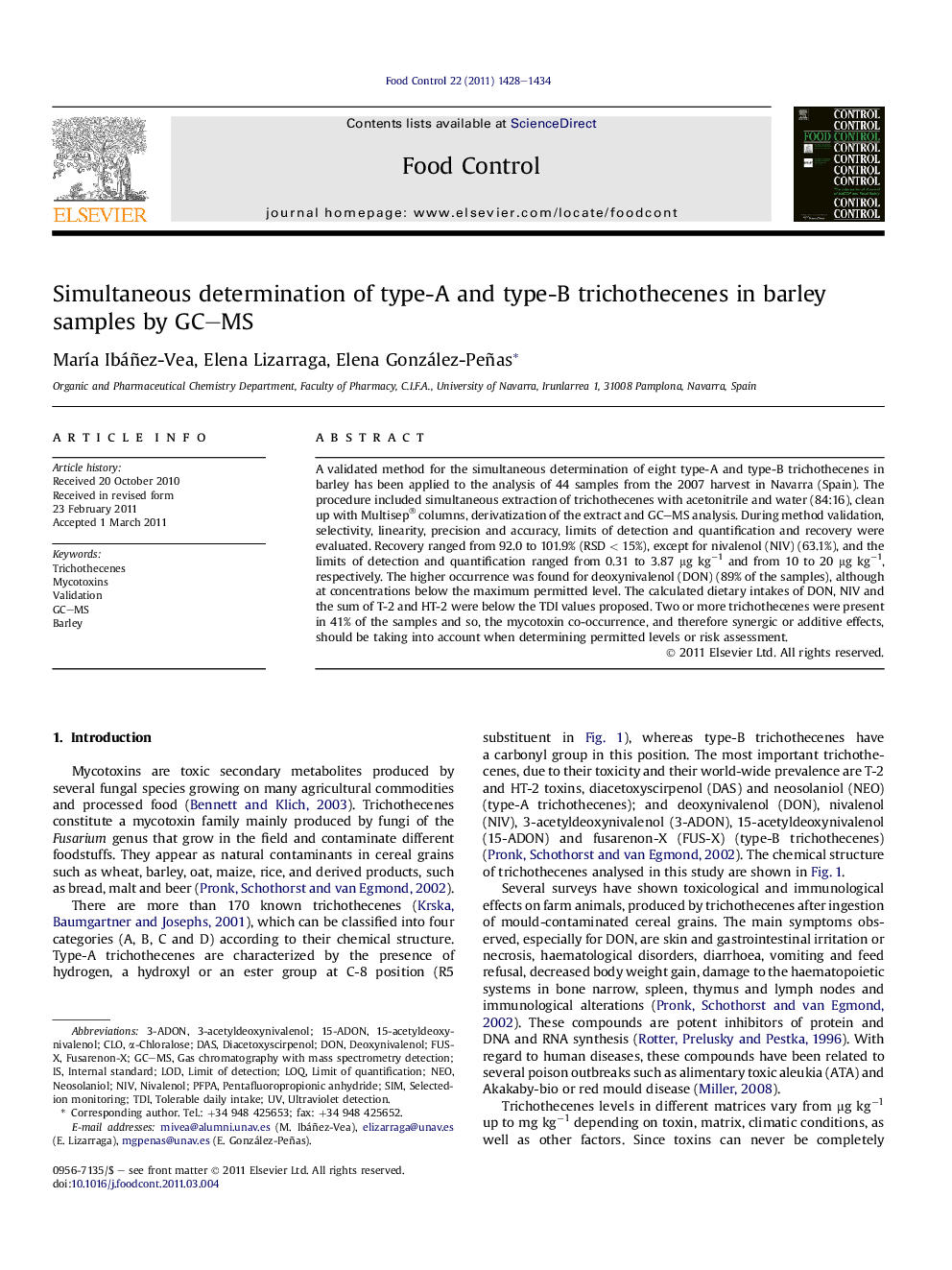| کد مقاله | کد نشریه | سال انتشار | مقاله انگلیسی | نسخه تمام متن |
|---|---|---|---|---|
| 6394597 | 1330470 | 2011 | 7 صفحه PDF | دانلود رایگان |

A validated method for the simultaneous determination of eight type-A and type-B trichothecenes in barley has been applied to the analysis of 44 samples from the 2007 harvest in Navarra (Spain). The procedure included simultaneous extraction of trichothecenes with acetonitrile and water (84:16), clean up with Multisep® columns, derivatization of the extract and GC-MS analysis. During method validation, selectivity, linearity, precision and accuracy, limits of detection and quantification and recovery were evaluated. Recovery ranged from 92.0 to 101.9% (RSD < 15%), except for nivalenol (NIV) (63.1%), and the limits of detection and quantification ranged from 0.31 to 3.87 μg kgâ1 and from 10 to 20 μg kgâ1, respectively. The higher occurrence was found for deoxynivalenol (DON) (89% of the samples), although at concentrations below the maximum permitted level. The calculated dietary intakes of DON, NIV and the sum of T-2 and HT-2 were below the TDI values proposed. Two or more trichothecenes were present in 41% of the samples and so, the mycotoxin co-occurrence, and therefore synergic or additive effects, should be taking into account when determining permitted levels or risk assessment.
Journal: Food Control - Volume 22, Issue 8, August 2011, Pages 1428-1434